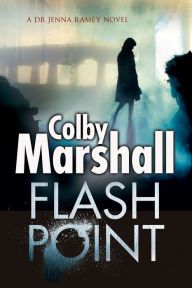What's the Big Idea?
By - July 19, 2012
One of the things every writer will be asked at some point or another whether they're published, unpublished, trying to publish, or anything in between is, "Where do you get your ideas?" Over the years, I've answered this question many ways. The top two answers (depending on whether or not I'm controlling my smartass gene on any given day) traditionally have been:
1. They just come to me.
2. I buy them from a guy on the corner for a dollar a pop.
Then, this past week at Thrillerfest, a panel of author was asked this same question, and they tried to explain the exact place from where their ideas stemmed. Some cited news articles, others talked about conversations they'd had. R.L. Stine's approach amazed me the most: he says he thinks of interesting titles first, then subsequently develops a story to go with them. His example was Little Shop of Hamsters, which even as a lifelong Goosebumps fan, I had to Google to make sure it was real. It's one of the few Goosebumps books I haven't read. (Check it out here--bottom shelf!)
This got me to thinking about Chain of Command and where the idea of the book began. I think I owe the idea to a high school government teacher whose teaching plan included an explanation of the United States' chain of command. I guess, if that's the case, I technically owe it to whoever picked that particular textbook and curriculum.
Either way, learning who would take over for the president in the event of a tragedy after the vice president in that class oh-so-long ago would come back up years later during the Presidential Campaigns in 2008. A few women's names came into play during the different candidacies being announced, and I remember having a very frank conversation with a friend about how if I was a man, I wouldn't know how I would feel personally about running with a woman.
"Why? Would you not want to see a woman in office?" my friend asked.
"That's not it at all," I replied. "But I'd be scared if I was her running mate, that whatever I was running for would turn out to be the opposite of what I was signing up for."
"How do you mean?"
"Well, it's just that if a woman runs for president and is elected, I'd be scared a radical someone wouldn't like a female president and would manage to assassinate her. Then, I'd be President and not Vice President and in the middle of scandal. If I was running for President with a female running mate, I'd be scared some radical feminist would want a female to be president so badly they'd assassinate me!"
As you know, the election ended, and two men took the highest offices in the land. Still, my wheels had begun to spin, and like many book ideas, this one began with a question: what if someone did want the first female president so badly they were willing to kill? Was there a way, even if the Vice President was a male, too?
My high school government class popped into my head, and the idea for Chain of Command began to form. A plot started taking root in my mind about a journalist discovering that a double assassination had nothing to do with disliking the current fictional President and Vice President's politics and everything to do with that a female sat as Speaker of the House and third in line for the presidency.
So, that, ladies and gents, is the short story of how Chain of Command (or, as I sometimes affectionately refer to it, "Chain") went from the seed of an idea to an 80,000 word manuscript.
Are there any school lessons that have stuck with you over the years that you found had some practical use for you?









 FLASH POINT (Dr. Jenna Ramey #3)
FLASH POINT (Dr. Jenna Ramey #3)
Comments
Be the first to comment on this post!
Add New Comment